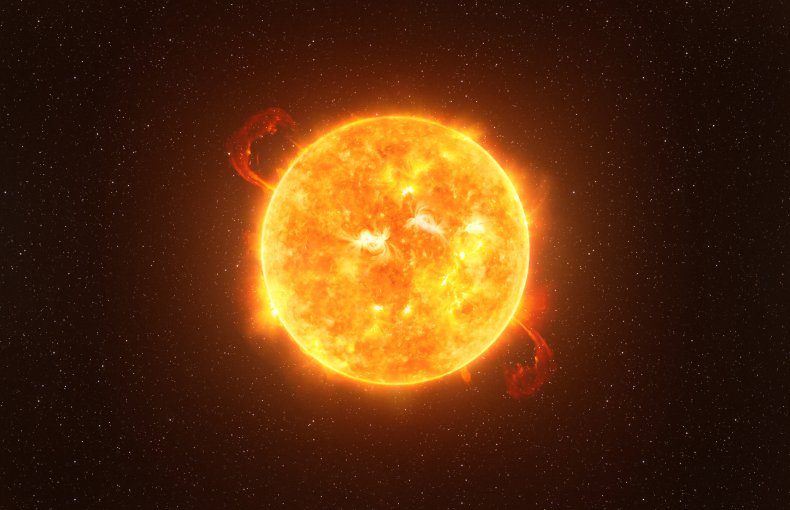What does a star's twinkle actually sound like?
When we look up the night sky, the largest stars appear to flicker. Most of the twinkling we can see with the naked eye is caused by the bending of starlight by the Earth's atmosphere. But there is another kind of twinkling too—an innate twinkling caused by the rippling waves of gas from the star's core to its outer surface.
In a new study published in the journal Nature Astronomy, researchers from Northwestern University analyzed this twinkling and developed the world's first 3D simulations of this rippling to determine how much a star should innately twinkle.

"The twinkling that we predict from our models is very subtle, and it wouldn't be perceptible by eye, but if you had a telescope (or you had eyes made of massive telescopes), maybe you could see it," Astrophysicist Evan Anders, who led the study, told Newsweek.
"Motions in the cores of stars launch waves like those on the ocean. When the waves arrive at the star's surface, they make it twinkle...For the first time, we have developed computer models which allow us to determine how much a star should twinkle as a result of these waves."
Using these models, Anders and his team figured out how to link the brightness of a star's twinkle to the motions of the waves inside it.
"This will let us learn more about what happens in the inner regions of stars which cannot be seen directly by telescopes, and may someday let us learn about the very deepest regions of our own sun," he said.
The waves of rippling gas within the star and across its surface are beyond the range of human hearing, but to get an idea of what this might sound like, Anders and his team raised the frequencies of the waves produced in these simulations to generate audible sound.
"We raised the frequencies into the audible range, assigned random phases to each 'note' in our data (this phase randomness makes it sound like noise instead of like one fast chirp), and then we just play that as audio," Anders said.
"Honestly, they sound pretty horrible! They sound like rhythmic noise, almost like a jackhammer mixed with the static you hear between radio stations," he said.
Using their models, the team then isolated the waves that appeared at the star's surface to hear how they changed as they passed through it.
"The sound heard at the surface, sounds like a combination of a siren and a low, oscillatory rumble behind it," Anders said. "The more massive the star, the deeper (more bass) the sound of the siren, and the background rumble is easier to hear."

To the untrained ear, it is hard to really pick out the differences between how the rippling sounds at the star's core compared to its surface—at the end of the day, it is still just atmospheric noise. And so, the team decided to pass known songs through the star simulations to make it easier to hear exactly what changes the star would make to the original tune.
"When we hear a song, we can hear a broad spectrum of notes, some high-pitched and some low-pitched," Anders said. "When we pass the song through a star, we can hear how the star separately affects high-pitched sounds and low-pitched sounds, and it's a bit easier to understand the differences that one star makes compared to another.
"We want listeners to get a feeling of how different types of stars affect their waves (or similarly a song) differently," he said. "For example, in the smaller star, you can hear the song itself dimly in the background, but lots of the bass notes have been filtered out by the song, and the star sets up high-pitched oscillations which sound kind of like wind chimes.
"In the bigger star, the higher-pitched notes from the song have disappeared and it sounds almost like it's being played by an organ, and the windchimes sound instead like feedback from a microphone."
These audible changes correspond to how a star would change the waves that pass through its interior towards its surface, allowing us to make predictions about how the resulting twinkling would look on the star's surface.
"sound" - Google News
July 27, 2023 at 10:00PM
https://ift.tt/5S6w1Me
'Sound Pretty Horrible': Scientists Simulate Sound of a Star's Twinkle - Newsweek
"sound" - Google News
https://ift.tt/eR8gEOf
Shoes Man Tutorial
Pos News Update
Meme Update
Korean Entertainment News
Japan News Update

No comments:
Post a Comment